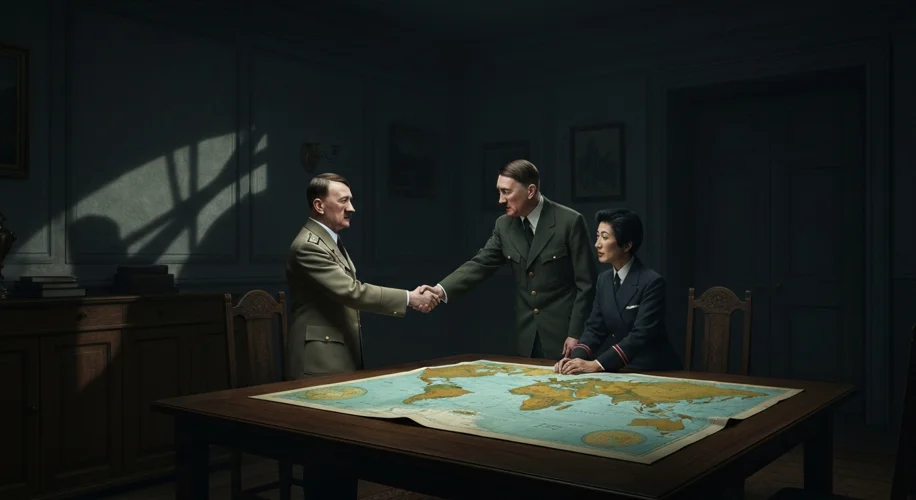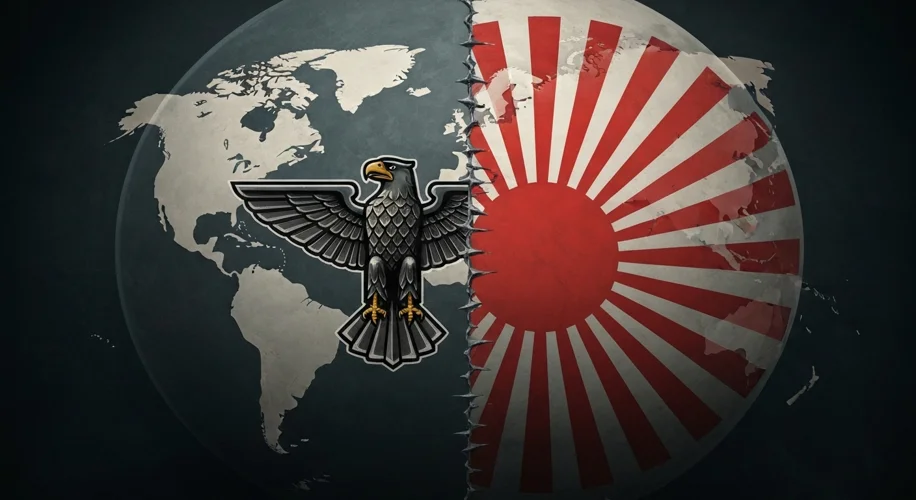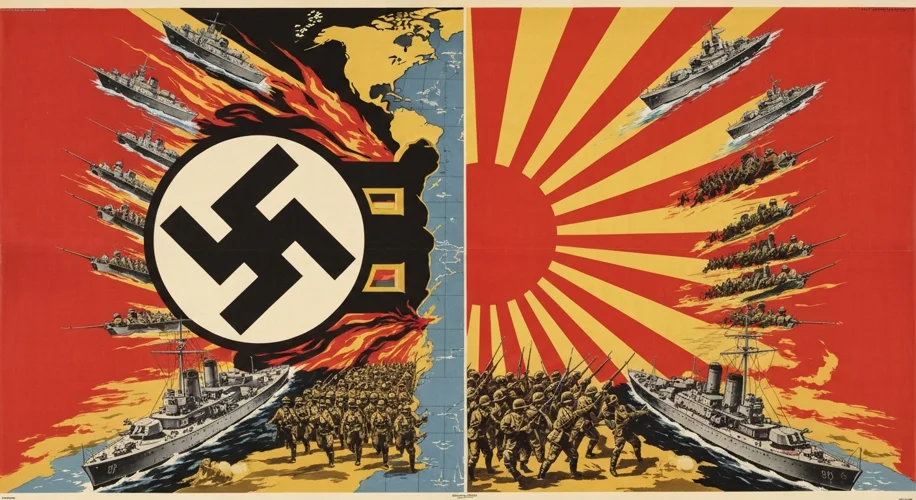The year is 1942. The world is ablaze, locked in a conflict of unprecedented scale. Yet, amidst the roar of cannons and the wail of sirens, a peculiar and chilling alliance was being forged, a pact between two vastly different, yet ideologically aligned, powers: Nazi Germany and Imperial Japan. Their shared ambition was the reshaping of the world, a vision painted in the brutal hues of conquest and racial supremacy.
For years, the seeds of this alliance had been sown. The Tripartite Pact, signed in September 1940, officially formalized their military and economic cooperation. It was a declaration of intent, a stark warning to the Allied powers that the Axis was a force to be reckoned with. Germany, under the iron fist of Adolf Hitler, sought Lebensraum (living space) in Eastern Europe, driven by a virulent anti-Semitism and a belief in Aryan superiority. Japan, led by Emperor Hirohito and a powerful military elite, pursued its own imperial ambitions in Asia, aiming to create a “Greater East Asia Co-Prosperity Sphere” and liberate Asia from Western colonial rule – though this liberation often meant subjugation under Japanese dominion.

The strategic calculations were audacious, bordering on the reckless. The pact was designed to tie down the Allied powers, forcing them to fight on multiple fronts. Germany’s blitzkrieg in Europe was meant to distract and weaken the Soviet Union, while Japan’s rapid expansion in the Pacific aimed to neutralize American influence. The idea was simple, yet terrifying: if both powers could achieve dominance in their respective theaters, they could then turn their combined might against any remaining opposition.
But what did “victory” truly look like for these allies? The plans, often discussed in hushed tones and coded messages, hinted at a world carved up like a pie. Germany envisioned a Europe dominated by its racial hierarchy, with Slavic populations enslaved or eliminated, and vast territories settled by Germans. Japan saw an Asia under its unshakeable control, its resources exploited for the glory of the Emperor. The architects of this New World Order rarely delved into the specifics of how they would divide the spoils between themselves, but the underlying assumption was clear: spheres of influence would be meticulously defined, and cooperation would be based on mutual, albeit self-serving, interest.
Ideologically, they found common ground in their disdain for democracy, communism, and the liberal international order. Both regimes were inherently militaristic, built on principles of authoritarianism, nationalism, and racial purity. Nazi propaganda often depicted the Japanese as a fellow “honorary Aryan” race, a convenient fiction that masked the inherent racism that permeated both societies. This ideological alignment, however superficial, provided a potent, albeit warped, justification for their alliance.
Imagine a world where this Axis victory had been realized. Germany dominating Europe, its swastikas flying from the Atlantic to the Urals. Japan, the empress of Asia, its Rising Sun flag unfurled across a vast dominion. What would have been the nature of their relationship? Would they have remained wary partners, or would the inherent strains of their imperial ambitions have led to friction? Historians speculate that a post-war scenario could have seen a de facto division of global power, with Germany controlling the West and Japan the East. Perhaps a tense, cold-war-like standoff would have emerged between the two, each seeking to expand its influence at the other’s expense, or perhaps a more direct confrontation might have ensued over shared interests, such as control of vital resources or strategic territories in the Indian Ocean or even Africa.

Ultimately, the dream of a victorious Axis alliance remained just that – a dream. The tide of war turned, and the combined might of the Allies, fueled by industrial power and unwavering resolve, proved insurmountable. The pact, forged in ambition and aggression, dissolved in the ashes of defeat. Yet, the historical echo of this alliance serves as a stark reminder of the dangers of unchecked ambition, virulent ideologies, and the chilling potential for human cruelty when nations unite not for mutual progress, but for mutual destruction.
The legacy of this alliance is not one of collaboration, but of a shared commitment to a world built on subjugation and fear. It underscores the critical importance of vigilance against the rise of authoritarianism and the enduring necessity of defending democratic values and human rights on a global scale. The Axis alliance was a shadow that threatened to engulf the world, a testament to the dark corners of history we must never forget.

